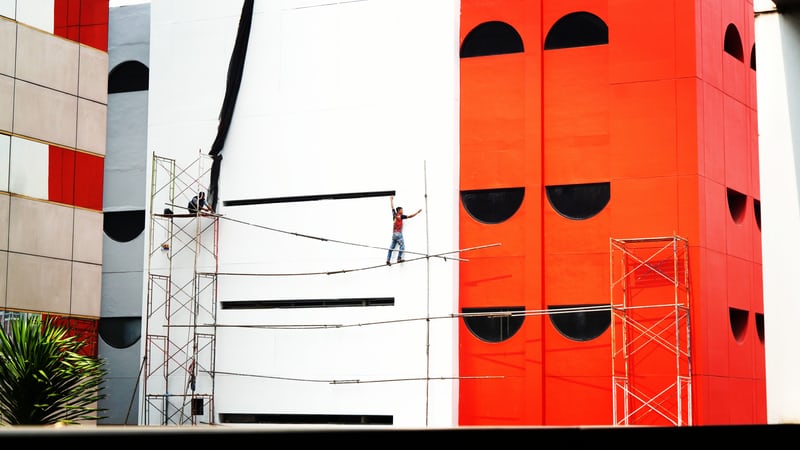How parenting helps you manage workplace health and safety
Parenting is “risky” business. So is managing health and safety in the workplace. Apply what you know as a parent and you’ll be on course to health and safety in the workplace.

Similarities
Risk-management is ordinary
We want our kids to be happy and thrive so we let them take chances, make mistakes. We let them climb the highest tree, take a high skate ramp or bike jump even though “secretly” it may scare us to death.
Healthy risk-taking helps kids become resilient. Also important are caring & supportive relationships, coping skills, encouraging kids to problem-solve and letting them make mistakes to learn. Rather than say no to our kids risk-taking, we prepare them, inform and equip them, support them through the challenges and mishaps.
Risk-taking is also an inevitable part of business. It goes with employing staff; working with people; living with climate change and prospects of natural disasters etc. Preventing and dealing with risks therefore, needs to be BAU in terms of workplace culture, staff and client relationships, policies and procedures and decision-making processes.
Guided by a risk appetite
Sometimes we have to say “no” to our kids’ options for fun. But more often we don’t. Our response depends on our “risk appetite” – the level and nature of risk that we will accept given the likely benefits of the activity (eg can I live with the consequence of torn clothing, damage, a broken bone if the risk eventuates?).
Similarly, as managers, governors and staff, faced with choices that carry risks, we will consider what level and types of risks we can live with and manage. We communicate and engage with staff and others around what risks we’re comfortable with through our policies and procedures, when assessing risks and adequacy of controls.
Fair response
As a parent and as a manager, our response to risk(s) will depend on how severe we think the consequence will be and how likely it is. Our response should be proportionate, reasonable and ideally, particular to the risk(s).
Risk scenarios involving the most severe consequences should be prioritised and receive the most intense response.

Differences
Regulations
Regulations require workplace health and safety to be front and centre for workplaces. The job of a parent is less regulated with laws applying only in specific circumstances (eg riding with a helmet, use of child restraints, criminal offences).
This difference has important consequences. For example, organisations face sanctions if they don’t comply with legal requirements. More positively, a business or organisation can gain from the ready-made guidance provided by regulations.
Disclosure
As parents, we’re not usually obligated to talk to our child(ren) about risks. By contrast, full and transparent disclosure of information about risks is necessary in the workplace. Staff, clients and visitors to the workplace have a right to be fully informed about of risks to their safety and to make decisions about their safety based on that.
Gut versus informed
As a parent, we’ll often act on our “gut” about risks. Sometimes, we might do extra homework to get better informed about the real picture but it’s not required.
A more systematic and thorough approach is however expected of management. A manager must take reasonable steps to keep themselves informed about risks and put effective safety controls in place. Managers should therefore be aware of relevant data from industry and elsewhere about risks and effective safety controls (eg protective equipment; MoH guidelines).
Participation
The extent to which we talk to our children about risks and safety will depend on their age, our parenting style and preferences etc.
As managers, though, the law is clear that we must engage and allow staff to participate in health and safety decision making in the workplace. It makes sense too if we want to ensure that we are over the risks and taking all due care about the health and safety of those in our workforce.
Conclusion
Our health and safety responsibilities can sometimes feel overwhelming. Now, more than ever, health and safety must be front and centre for organisations.
If you’re into DIY policies and procedures, remember you’ve got a lot to practical experience of managing risk to draw on if you’ve been or are a parent.
But if you’re not into DIY and want the convenience and relief of having someone else take care of your agency’s policies and procedures, contact us. Our online policy and procedure service, accessible 24/7, includes health and safety policies that we can customise to you.
Let us look after your policy and procedure needs so you have more time to focus on your work and whānau.
Contact us NOW!
